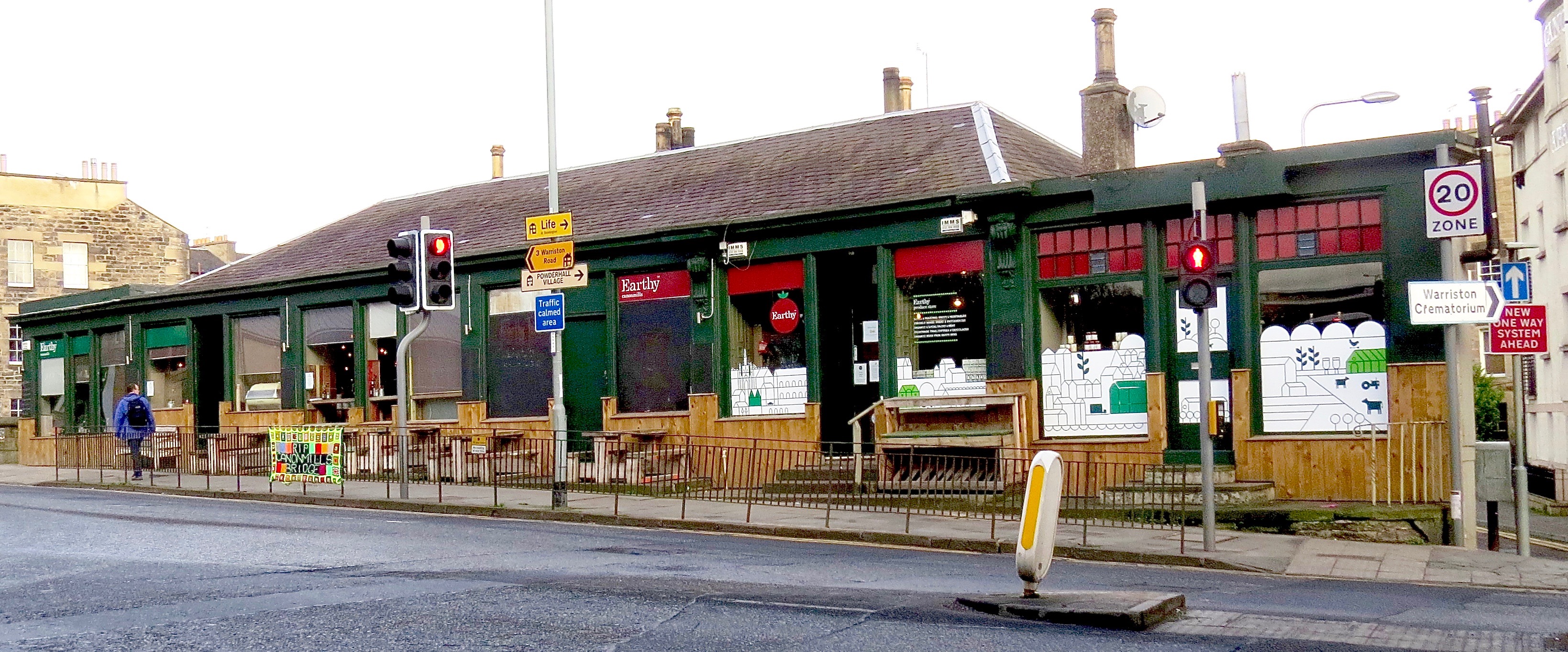
SEPA MAY STEP IN
Some people may have thought that the fight to save 1–6 Canonmills Bridge is now a lost cause (Breaking news, 29.1.16), but die-hard campaigners have not given up hope.
Bill Geary, a civil engineer and local resident, believes he’s found a new angle on the controversy which could involve the intervention of the Scottish Environment Protection Agency (SEPA).
SEPA is Scotland’s principal environmental regulator, protecting and improving Scotland’s environment, including the water environment.
Mr Geary explains below.
*****
Forgetfulness
It seems the developer forgot about the Water of Leith. Or, to be more accurate, the planning application referenced the first part of the Council’s Waterside Development Planning Policy, but neglected the other requirements. This Planning Policy* states:
Development on sites adjoining a watercourse will only be permitted where the proposal:
a) provides an attractive frontage to the water in question;
b) maintains or provides public access to the water’s edge;
c) maintains and enhances the nature conservation or landscape interest of the water body including its margins.
The proposed development has no access to the water’s edge. On this narrow site, such access would require, in all likelihood, the loss of one of the four-storey houses. It’s a wonder that the developer overlooked this requirement.

Flawed process
The Planning process was similarly fundamentally flawed, because the consideration and approval by the Planning Subcommittee on 5 November 2010 considered eight ‘relevant policies of the Edinburgh City Local Plan’, but not the policy cited above.
The proposed development would be the first on the Water of Leith in a hundred years to form a new multi-storey riverbank. Between the City Bypass and Ocean Drive, multi-storey development forms a vertical riverbank at only a few locations,** totalling about 1 per cent of the riverbank length.
Development along the river is characterised by its open nature, as reflected by the Water of Leith Conservation Trust’s motto of ‘a silver thread in a ribbon of green’. Ruling that the proposed development is more in character than the existing modest building goes against generations of careful development, and risks setting a precedent leaving the ‘silver thread’ knotted in a dark corner.

When validating the Planning Application, the developer and the planners forgot to consult with SEPA – at that time, a requirement.
Nevertheless, SEPA must still be consulted for any work in and around a watercourse. This ‘regulatory consultation’ is not prejudiced by the grant of planning permission. Every development is considered on its own merits and SEPA can impose an appropriate buffer at the water’s edge.
Access to the water’s edge will require a revised application for planning, which can be more carefully considered. So the hope is that SEPA will save the day.
Note * The Edinburgh City Local Plan was adopted in January 2010. (The initial Planning Application, in April 2009, referenced a draft copy of the 2010 Plan. Permission was granted in November 2010.) The second version of the Local Development Plan was submitted to Scottish Ministers on 29 May 2015 for examination. The Waterside Development Policy is changed only in that item ‘b’ now states: ‘where appropriate, maintains, provides or improves public access to the water’s edge’. A multi-storey riverbank development, however, will require entry to the watercourse for construction, future repairs and maintenance, which would be inconsistent with item ‘c’ regarding nature conservation. Therefore, it would seem better to state that access (sufficient for scaffolding) should be maintained or provided at the water’s edge and, where appropriate, public access at the water’s edge should be maintained, provided or improved.
Note ** Multi-storey riverbank: The Bond House (~1905) at Anderson Place; a terrace at Dean Bank Lane in Stockbridge (~1900, with partial redevelopment in 2004); and 19th-century buildings near Dean Village bridge. There are also two-storey flats (~1944) at Newhaven Road, although these sit below the adjacent bridge level, hidden from normal view.
*****
Spurtle has no professional legal or planning expertise, and so we are not in a position to say whether a SEPA intervention at this late stage is likely or not.
However, Mr Geary has shown us his recent correspondence with the Scottish Government Planning and Environmental Appeals Division.
Whilst insisting that the Reporter who considered the appeal looked at the site in context and took into account the river (see paragraph 11 of the decision), the official goes on to make clear that:
... it is for the Local Authority to oversee that the terms of any planning permission which has been granted, is carried out in accordance with the relevant regulatory guidelines including any consultation with SEPA prior to works being carried out.
This appears to confirm Geary’s reading of the situation. If you have relevant expertise and would like to stick your neck out, please get in touch.
-----------
Got a view? Tell us at
spurtle@hotmail.co.uk and @theSpurtle and Facebook
-----------------------------------
 Claire Kenny Marjory Kenny fingers crossed we can save it
Claire Kenny Marjory Kenny fingers crossed we can save it
 Marjory Kenny Nice one fingers crossed and wings crossed x
Marjory Kenny Nice one fingers crossed and wings crossed x
The following series of Tweets below from @sign_not_in_use interested us. We asked for some background context, and the person behind the profile told us 'I'm a specialist planning lawyer with 15 yrs experience (and not acting for any of the protagonists in this case)'.
@theSpurtle if time limit for challenging Reporter's decision has now elapsed - and I suspect it has - then it can't be reopened.
@theSpurtle so whether a policy requirement was missed, or SEPA wasn't consulted, doesn't make any difference now.
@theSpurtle incidentally, that DP policy unlikely to be relevant, given that access to river no worse than for existing building
@theSpurtle ...and SEPA probably didn't need to be consulted, unless the development was going to affect the flow of the watercourse...
@theSpurtle ...or have obvious ecological impacts (suspect not likely in either case). So even if decision could still be challenged ...
@theSpurtle ...these would not be strong grounds for overturning the decision.
E-mail from Bill Geary: Thanks for your consideration and comments. Addressing a couple of your points. The proposed development triples the length of riverbank development by adding three new townhouses to the rear of the existing building, so there’s more than just the existing building to be considered.
The guidance calls for ‘consultation before granting of planning permission’ with SEPA for ‘the carrying out of works or operations on the bed or on the banks of a stream’. In recent years SEPA have advised certain discretions, but there was no such advice when the application was validated.
The Scottish Government agree with you that the Reporter’s consideration is closed, so it is awkward to challenge mistakes and injustice. However, they confirm SEPA’s enforcement powers. In this regard, the wider history of riverside development seems important as does access (sufficient for scaffolding at least).
Credit to Bill Geary for his detailed and specific inquiry… http://fb.me/1cqpPeYRE
 Shaeron Averbuch Very well explained points. Good luck with ongoing opposition.
Shaeron Averbuch Very well explained points. Good luck with ongoing opposition.
 Joan Balfour I really hope this works
Joan Balfour I really hope this works
 James Mackintosh Good work !
James Mackintosh Good work !
 Susie Fabbro Excellent new and very appropriate consideration to take
Susie Fabbro Excellent new and very appropriate consideration to take

